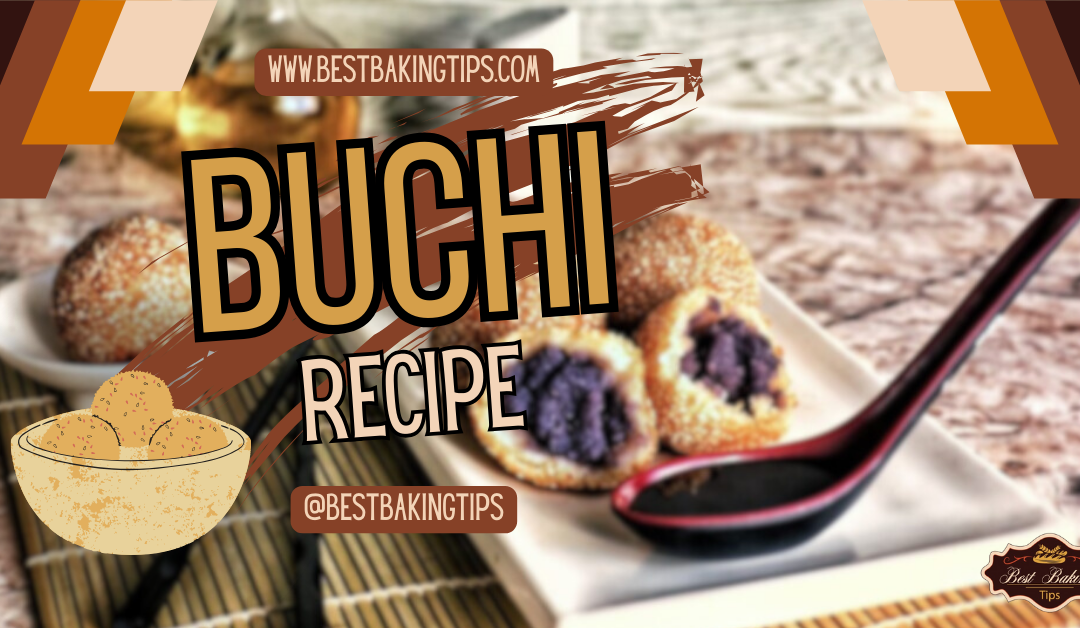==================
Affiliate Statement
Best Baking Tips is supported by our audience. When you purchase through one of our links, we may earn a small affiliate commission. As an Amazon Associate I earn from qualifying purchases. Your cost is not affected.
==================
Buchi is a popular Filipino snack made of glutinous rice balls coated with roasted sesame seeds. It’s traditionally served during parties and celebrations, but it’s also easy to make at home. If you’re looking for a unique and tasty treat, why not try making your own buchi? The recipe below is easy to follow and only requires a few ingredients. Give it a try next time you’re in the mood for something sweet!
Buchi and Its Origin
Buchi balls are the counterpart of traditional Chinese jian dui sweets in the Filipino culture. It is typically made with glutinous rice flour that is shaped into tiny rounds and filled with a variety of sweet ingredients, including sweetened mung beans, red bean paste, or ube halaya. Buchi is typically rolled in sesame seeds for coating, adding a crunchy and nutty exterior when fried.
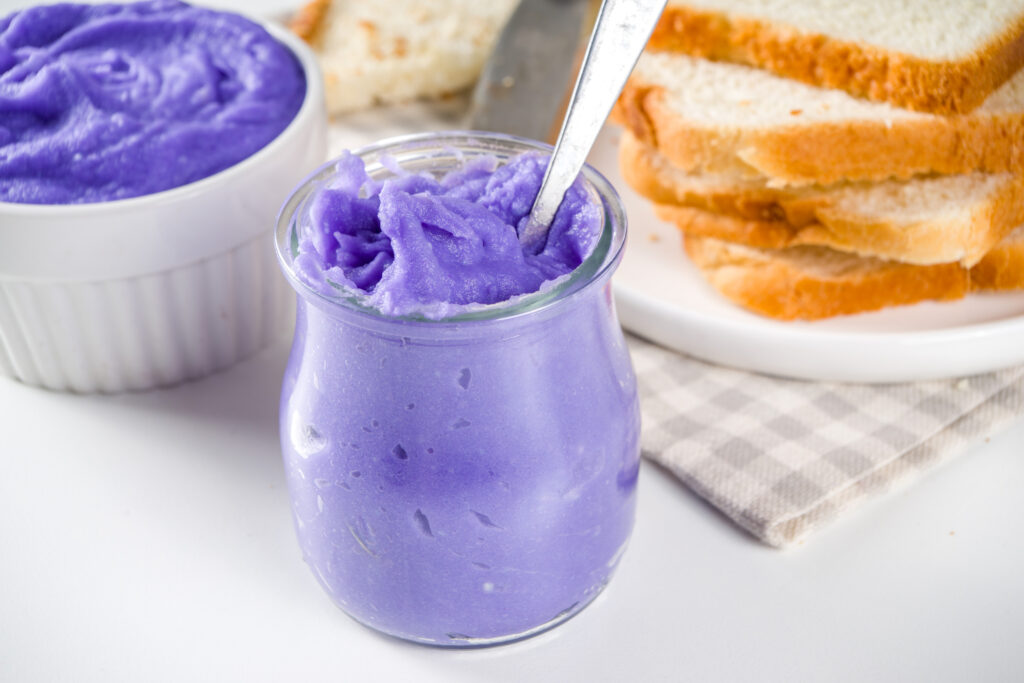
Homemade Ube Halaya
They were originally a classic Chinese delicacy, but the Filipinos have greatly popularized their variation. They make a substantial dessert or a quick sweet snack thanks to their crunchy shell, chewy texture, and creamy sweet filling inside.
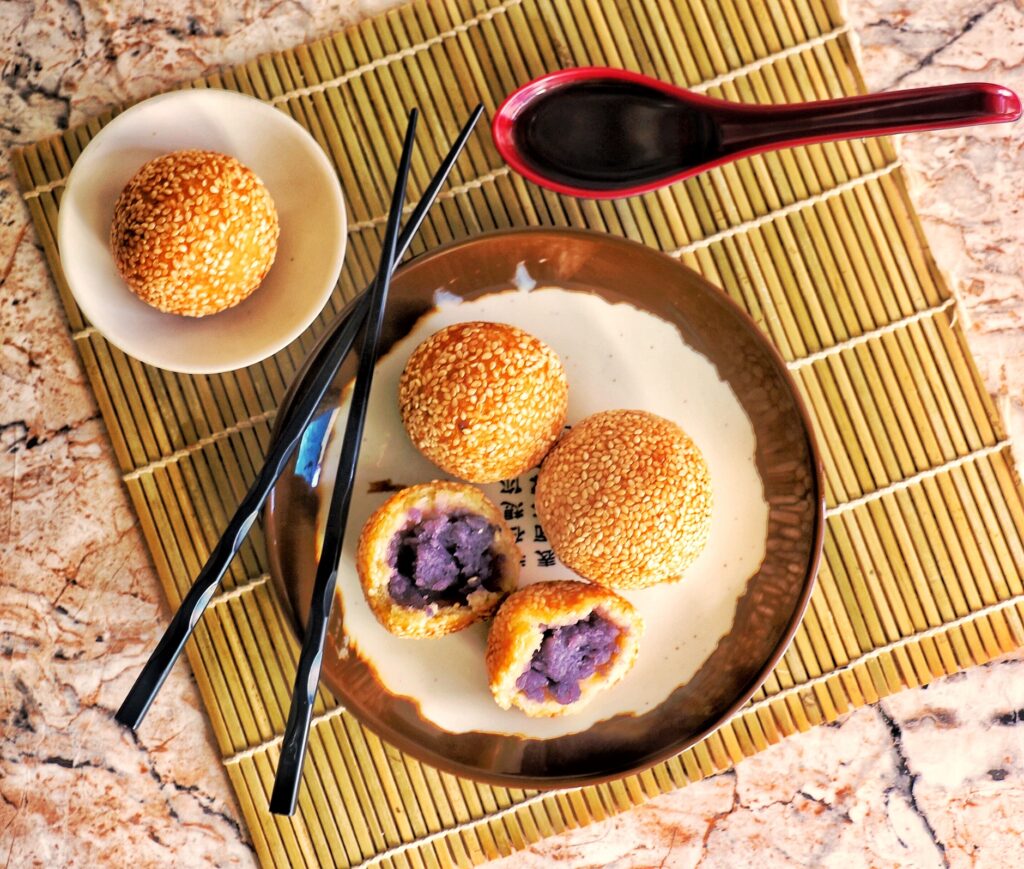
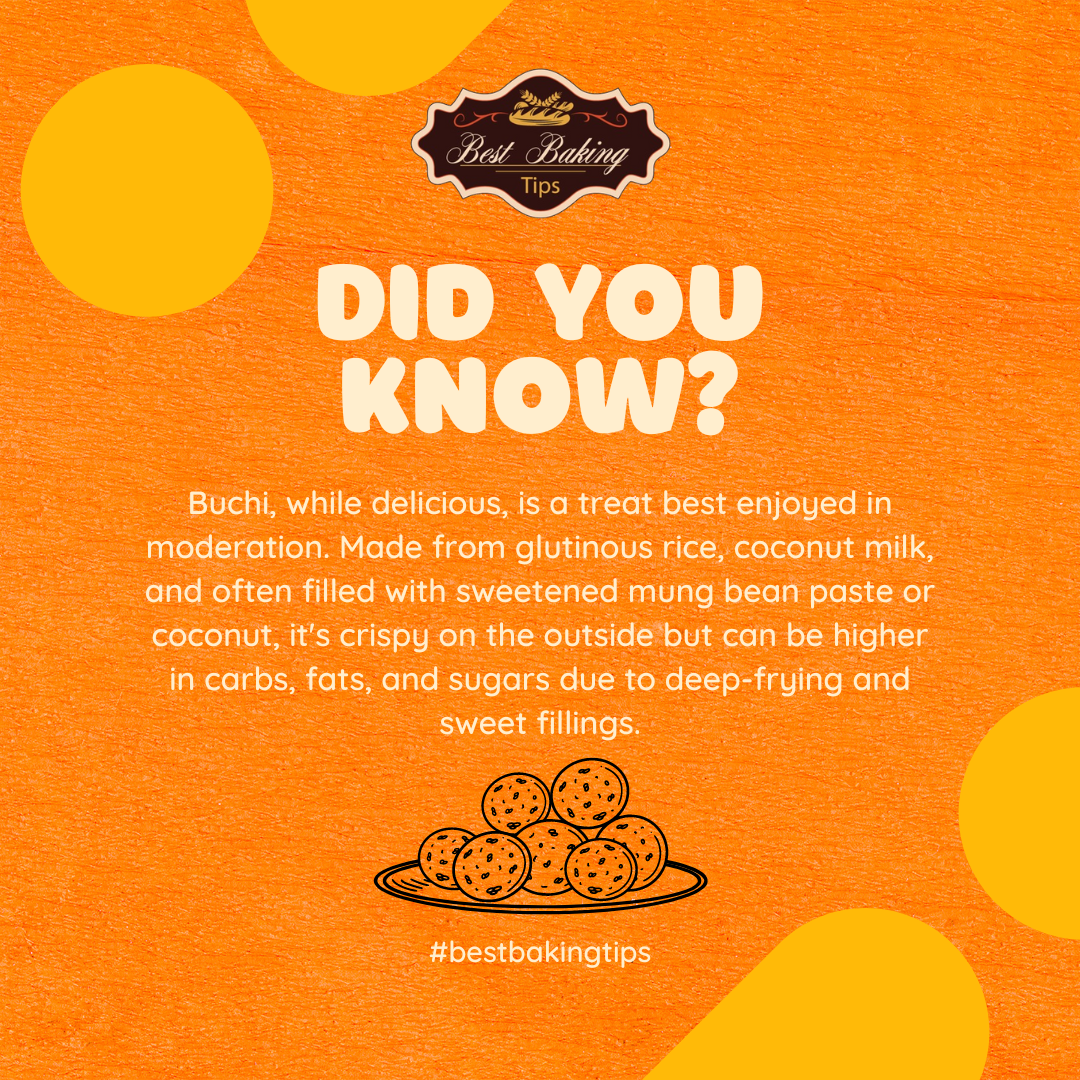
Tips For A Yummier Buchi:
- If you want your Buchi to be crispier, try adding some potato flour. The crispier, the better.
- When cooked at a high temperature, buchi will pop because the outside will cook before the inside. Therefore, for optimum results while frying, always use medium to low heat.
- The Buchi is usually considered done after it floats to the top. Keep it on a little while longer if you want to stop it from deflating later. To ensure even cooking while the balls are being fried, spin them continuously with chopsticks or a fork until you are happy with the texture and color.
- Like all other types of rice, sticky rice absorbs water to variable degrees. Only use this recipe as a general reference. If the dough is too dry to form into balls, you might need to adjust the water. If the dough is excessively wet and begins to flatten a little after forming into a ball, on the other hand, you might need more glutinous rice flour. This is crucial because, even after being cooked, too much water will prevent the balls from floating.
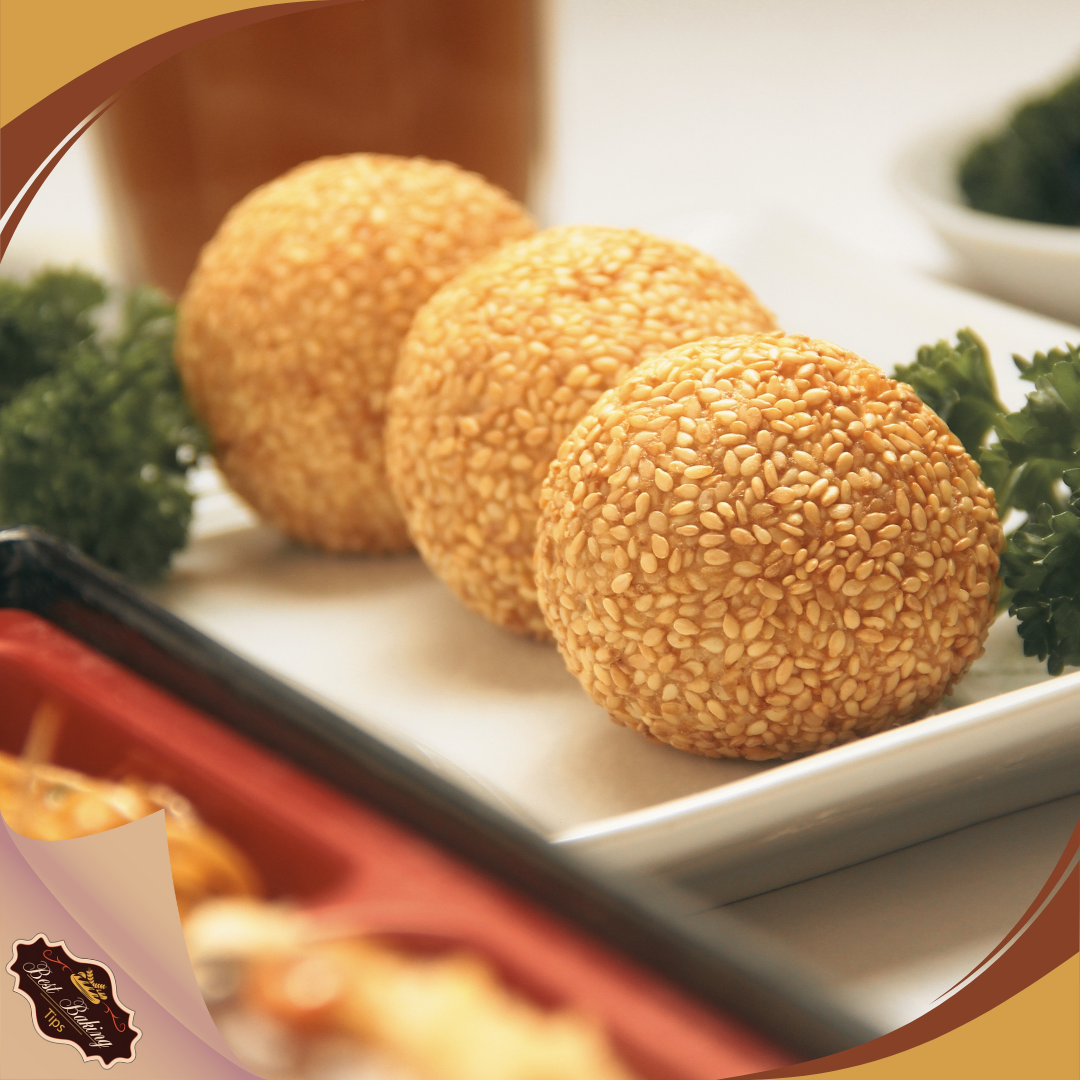
Variations and Substitutions
Making Buchi can cost you a little effort since you also need to make your own filling. However, if you have no time to make your own from scratch, consider buying the readily available paste filling in any Asian stores.

But to make your own filling, you can follow the recipe below:

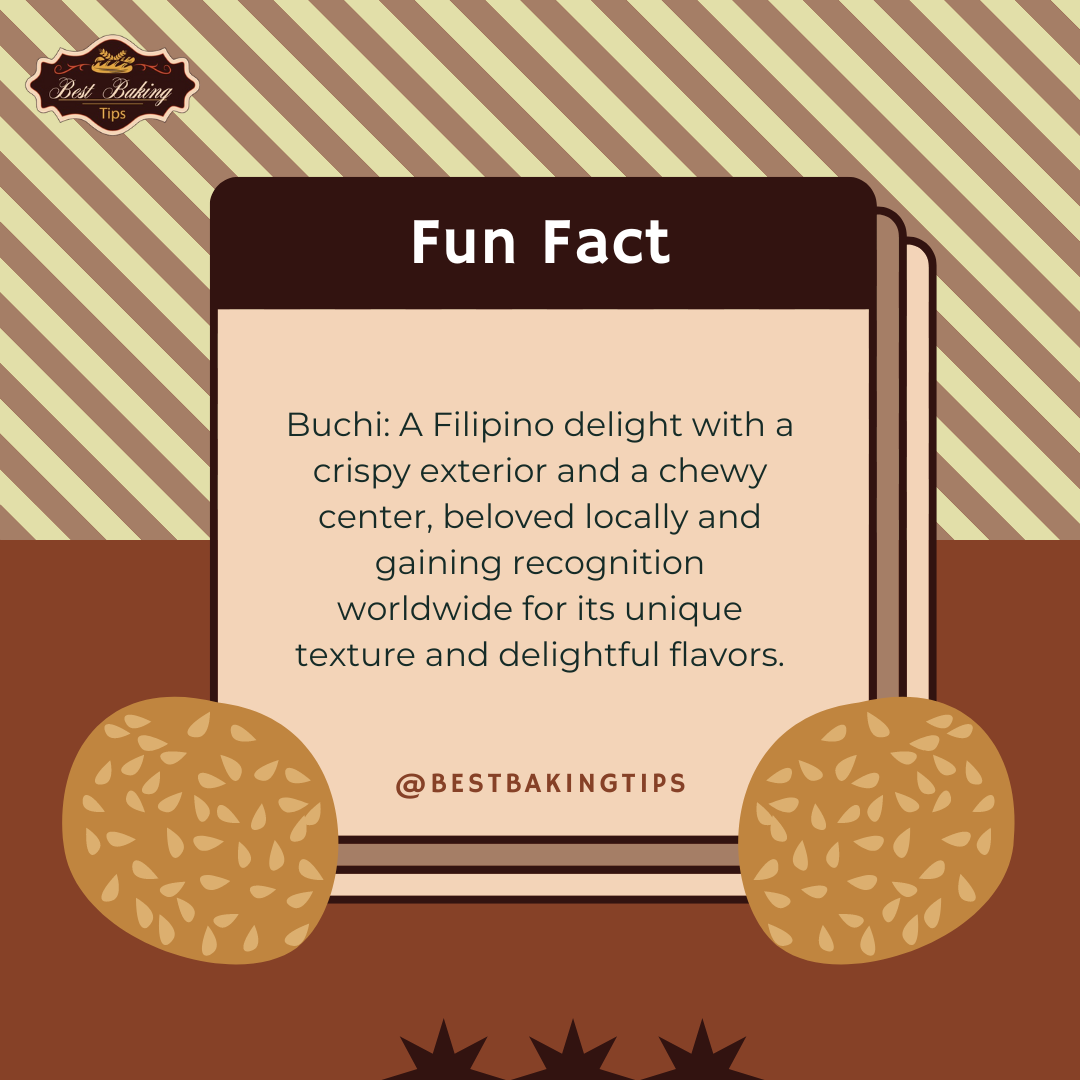
Homemade Red Bean Paste Recipe
- 2 cups kidney beans
- ¼ cup water
- ¼ sugar
- Combine all ingredients in a blender and grind it until fine texture.
- Transfer to a pan and simmer for about 15 minutes at medium heat, frequently stirring to prevent burning, or until it really thickens and the water is completely absorbed.
- Allow the bean paste to cool down before using.

Buchi Recipe

Time to have some buchi! This popular Filipino dessert is made with glutinous rice balls filled with sweet bean paste, coated with sesame seeds, and deep-fried until crispy. If you’ve never had buchi before, now is the time to try it. Here’s a simple recipe so you can make your own at home. Enjoy!
- 1 ½ cups glutinous rice flour
- ¼ cup brown sugar
- ¼ cup potato flour
- ¾ cup warm water (add more as needed)
- ⅛ teaspoon salt
- ½ cup sesame seeds
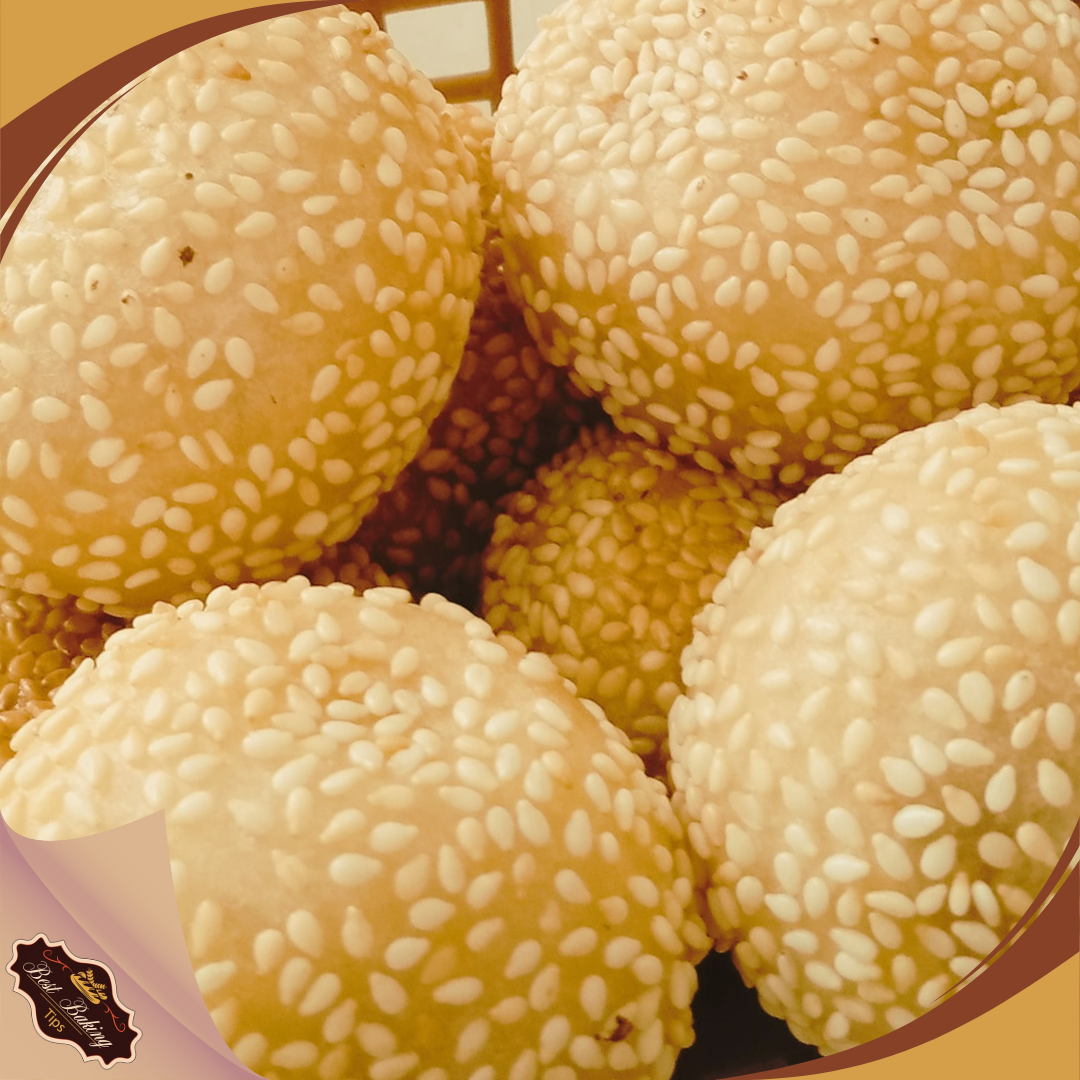
For the Fillings:
- ½ cup Ube Halaya
- ½ cup Sweet Red Munggo Paste
- Mix the heated water, sugar, and salt in a small bowl.
- Meanwhile, combine the potato flour and glutinous rice flour in a larger bowl. Add the sugar water, and stir until a dough forms.
- You might need to add a little water or rice flour to achieve the ideal consistency. It should be relatively moist and supple but not overly sticky.
- Create tiny balls from the dough that are 1 1/2 inches in diameter.
Filling and Shaping:
- Using both palms, flatten each ball. The dough shouldn’t fracture significantly around the edges if it is the appropriate consistency.
- Place about a half teaspoon of filling in the center and then gather the edges to encompass the contents. Roll the ball between your palms once more to make it rounded and smooth.
- After each ball has been filled, it is time to sprinkle sesame seeds on top. There should be enough sesame seeds on the ground.
- Rub your palms together after moistening them with a few droplets of water. Roll a ball between your palms several times. Roll the ball while lightly pressing it with sesame seeds.
Frying:
- Heat enough oil over medium heat in a deep pan or saucepan. The oil must be deep enough for the balls to be completely submerged while being fried.
- Refrain from crowding the hot oil; only enough balls should be there. For each batch, fry the buchi for 6 to 8 minutes or until golden brown and the balls float to the top. In a wire rack, drain.
- Serve while warm.
There are tons of filling options to choose from aside from bean paste. You can use ube-halaya, kaya paste, custard, jam, or even cheese.
Buchi: Don’t Miss Out on the Irresistible Charm of this Filipino Delight!
Buchi stands as a delectable fusion of flavors and textures, originating from its Chinese roots and blossoming into a beloved Filipino dessert. Throughout this article, we explored its origins, variations, and even provided a simple recipe for crafting this delightful treat at home.
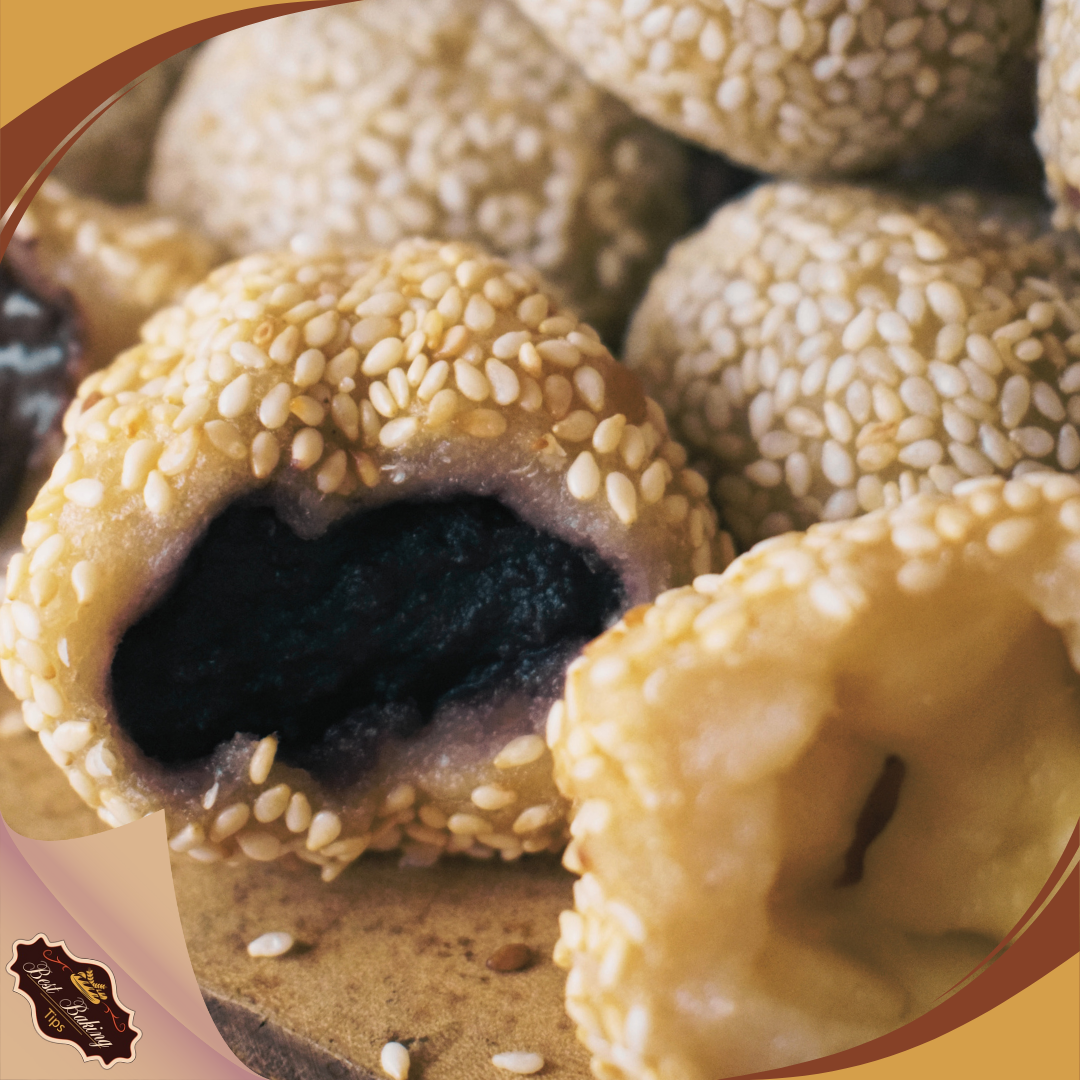
One simply wouldn’t want to miss out on Buchi for its unparalleled taste and the delightful experience it offers with every crunchy bite. Earlier, we’ve covered several essential things: delving into the history, making, and variations of this beloved treat.
With its crispy exterior, chewy texture, and luscious fillings, Buchi not only tantalizes the taste buds but also offers a delightful nutritional treat. Whether enjoyed as a dessert or a quick snack, its convenience to make adds to its charm.
I highly recommend sharing the joy of Buchi with family and friends. Its irresistible taste, nutritional value, and ease of preparation make it a must-try for any occasion. So why wait? Indulge in the joy of making and savoring Buchi today!
Try making Buchi at home and share the joy with your loved ones!
Connect With Us
If you’ve tried this Buchi Recipe, remember to leave a rating on the recipe card. Tag us on our social media accounts, subscribe to our weekly newsletter, and follow the Best Baking Tips and Vegan Globetrotter sites for more delicious ideas!

